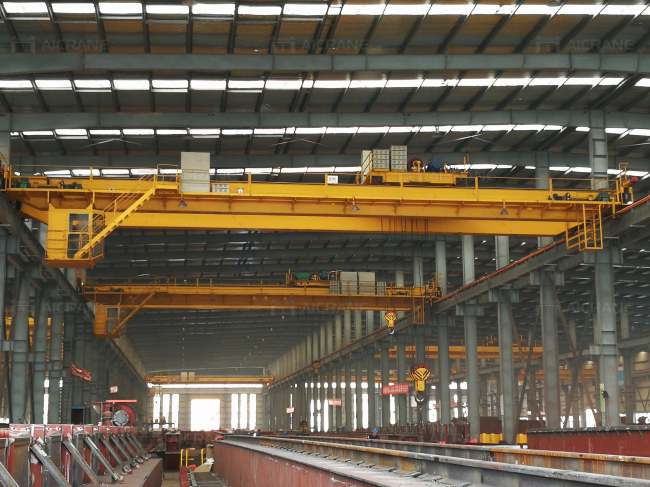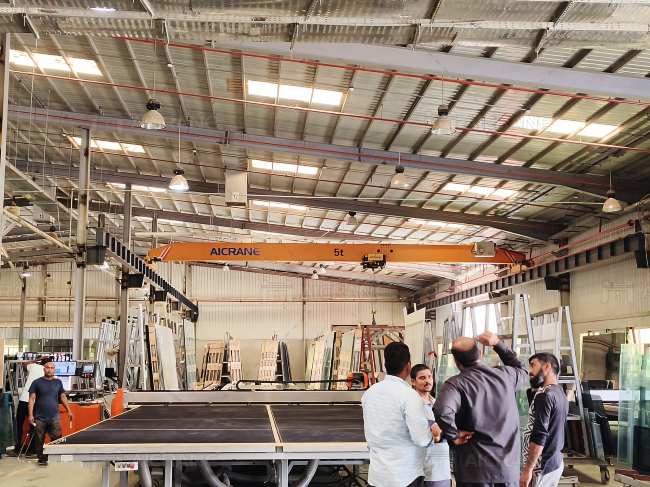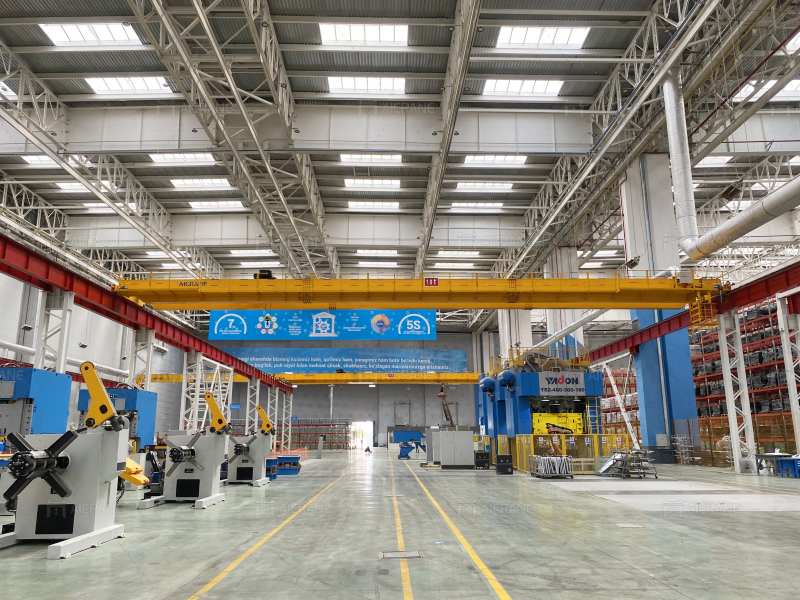Overhead shop bridge cranes are invaluable for lifting heavy loads in industrial and workshop environments. They enhance productivity by allowing for precise and efficient movement of materials. However, without proper safety measures, the use of overhead cranes can pose significant risks to workers and equipment. Improving safety in the workplace when using overhead shop bridge cranes is crucial to preventing accidents and ensuring smooth operations.
Here’s a comprehensive guide on how to enhance safety when operating overhead shop bridge cranes in your workshop.

Regular Operator Training and Certification
One of the most important steps in improving safety with overhead shop bridge cranes is ensuring that operators are well-trained and certified. Cranes are complex pieces of equipment that require specific skills and knowledge to operate safely. Proper training ensures that operators understand:
- The correct procedures for loading, lifting, and moving materials.
- How to handle different types of loads and how to secure them properly.
- How to detect potential issues with the crane or surrounding environment.
- Safety protocols in case of emergencies or malfunctions.
Certifying crane operators and conducting regular refresher courses ensures that operators stay updated on the latest safety standards and crane operation techniques. Proper training also helps to minimize human error, which is a leading cause of accidents in crane operations.
Implementing a Pre-Operation Safety Checklist
Before any operation, crane operators should perform a pre-operation safety check to ensure the crane is in good working condition. A daily or weekly inspection checklist should cover the following:
- Visual Inspection: Check for any visible damage to the overhead crane structure, hoists, and hooks.
- Functional Tests: Test all controls, including lifting, lowering, and moving functions. Ensure the crane operates smoothly without any unusual sounds or vibrations.
- Load Testing: Verify that the crane’s load limit is clearly marked and that it’s suitable for the weight of the materials to be lifted.
- Safety Equipment: Ensure safety devices such as limit switches, emergency stop buttons, and safety rails are functional.
- Wire Ropes and Chains: Inspect these components for signs of wear or damage, as faulty ropes or chains can lead to catastrophic accidents.
A thorough inspection before every use helps prevent accidents caused by mechanical failure or operator oversight.

Proper Load Handling and Rigging Techniques
Improper load handling is a common cause of crane-related accidents. To improve safety, it’s crucial to follow proper load handling and rigging techniques, including:
- Correct Load Securement: Ensure loads are properly secured using appropriate rigging gear, such as slings, hooks, and shackles. Loads should be evenly distributed to prevent tilting or shifting during the lift.
- Avoid Overloading: Never exceed the crane’s rated load capacity. Overloading can cause crane failure or load slippage, both of which can lead to serious accidents.
- Center of Gravity: Always lift loads from their center of gravity to ensure stability. Lifting from the edges or uneven points can cause the load to become unstable and tip over.
- Clear Communication: Operators and riggers should maintain clear communication through hand signals or radios to ensure everyone is aware of the lift process and any potential hazards.
Using proper techniques for rigging and load handling ensures that the load remains stable throughout the lifting process, reducing the risk of accidents. Either underhung crane or top running overhead crane, it is important to choose a reliable one for your heavy lifting needs.
Maintaining a Safe Work Environment
Creating a safe environment around the overhead shop bridge crane is just as important as proper crane operation. A cluttered or hazardous workspace can increase the likelihood of accidents. To improve safety:
- Establish a Safety Zone: Mark a designated area around the crane where only authorized personnel can enter. This prevents workers from being in the danger zone during crane operations.
- Remove Obstacles: Keep the crane’s path clear of obstacles such as debris, tools, or other equipment. This ensures smooth crane operation and prevents accidents caused by sudden movements.
- Proper Lighting: Ensure that the area is well-lit, especially in places where the crane moves or where operators need to perform manual checks. Adequate lighting helps prevent accidents caused by poor visibility.
- Warn and Educate: Use warning signs, lights, and audible alarms to alert workers of crane movement, and make sure they understand the dangers associated with the equipment.
A safe environment around the crane helps minimize the risk of workers inadvertently coming into contact with the crane or its load, reducing the chances of accidents. To get a reliable crane solution for materials handling, you are advised to cooperate a reputable supplier like Aicrane, to get professional advice and suitable recommendations.

Routine Maintenance and Inspections
Regular maintenance is essential for the safety and longevity of an overhead shop bridge crane. A well-maintained crane operates more efficiently and safely. Establish a routine maintenance schedule that includes:
- Mechanical Inspections: Regularly check components such as brakes, bearings, gears, and hydraulics for wear and tear. Replace parts that show signs of damage or degradation.
- Lubrication: Keep all moving parts properly lubricated to prevent friction-related failures that can lead to mechanical breakdowns.
- Electrical Systems: Inspect electrical components for wear, such as cables, connectors, and circuits. Faulty wiring or short circuits can be dangerous in a crane operation.
- Load-Specific Adjustments: Ensure that the crane is properly calibrated to handle the specific loads it will be lifting. This includes adjusting lifting height, load limits, and speed controls based on the application.
Proper and timely maintenance ensures that the crane remains safe to operate and reduces the likelihood of mechanical malfunctions.
Emergency Procedures and Safety Protocols
Accidents can still happen, even with the best precautions in place. It’s important to have emergency procedures in place to minimize injury or damage in the event of an incident. This should include:
- Emergency Stop Functions: Ensure that emergency stop buttons and switches are easily accessible and functioning.
- First Aid Kits and Medical Training: Provide first aid kits in the vicinity and train workers on basic medical procedures. In the case of an injury, immediate attention can prevent further harm.
- Evacuation Plans: Ensure that there is a clear evacuation route for workers in the event of a crane malfunction or an accident. Regularly review the plan with your team.
Establishing emergency procedures helps ensure that workers know how to respond quickly and safely if something goes wrong.
Conclusion
Safety with overhead shop bridge cranes requires a proactive approach that includes training, regular inspections, proper load handling, maintaining a safe environment, and implementing robust maintenance schedules. By following these safety practices, you can minimize risks, protect workers, and enhance operational efficiency. With the right procedures and precautions in place, your overhead shop bridge crane can operate safely and effectively, contributing to a productive and secure workshop environment.